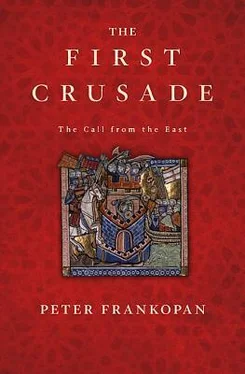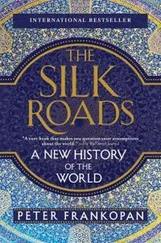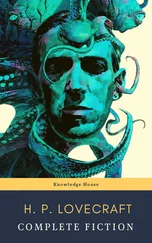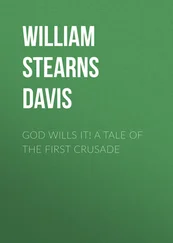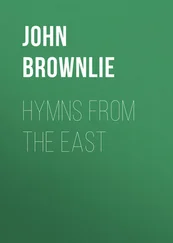11 The Crusade Unravels
1. Albert of Aachen, V.45, p. 402. • 2. Ralph of Caen, 120, pp. 136–7; Baldric of Dol, IV.12, p. 100; Albert of Aachen, VI.2, p. 406. • 3. Raymond of Aguilers, XIV, p. 119. • 4. Gesta Francorum , X, pp. 88–9; Albert of Aachen, VI.5, p. 410; Raymond of Aguilers, XIV, pp. 119–20. • 5. France, Victory in the East , pp. 122–42. • 6. Fulcher of Chartres, I.27.iv, p. 119. • 7. Albert of Aachen, VI.6, pp. 410–12. Also Gesta Francorum , X, p. 89; Raymond of Aguilers, XIV, p. 118. • 8. Fulcher of Chartres, I.26.i, p. 116. • 9. Gesta Francorum , X, p. 89. • 10. Raymond of Aguilers, XIII, p. 114. • 11. Albert of Aachen, VI.8, pp. 412–14. • 12. Gesta Francorum , X, p. 90; Raymond of Aguilers, XIV, p. 124. • 13. Raymond of Aguilers, XIV, pp. 124–5; Ralph of Caen, 125, pp. 140–2; Gesta Francorum , X, p. 90. • 14. Albert of Aachen, VI.10, p. 416; Ralph of Caen, 124, pp. 139–40. • 15. Gesta Francorum , X, pp. 91–2; Ibn al-Athir, AH 492/Dec. 1098–Dec. 1099, p. 21. • 16. Gesta Francorum , X, pp. 79–80. • 17. Raymond of Aguilers, XIV, p. 127. • 18. Gesta Francorum , X, p. 92. • 19. Fulcher of Chartres, I.27.xiii, p. 122. • 20. B. Kedar, ‘The Jerusalem Massacre of July 1099 in the Western Historiography of the First Crusade’, Crusades 3 (2004), pp. 15–75. • 21. Ibn al-Athir, AH 492/Dec. 1098–Dec. 1099, p. 21. • 22. S. Goitein, ‘Contemporary letters on the capture of Jerusalem’, Journal of Jewish Studies 3 (1952), pp. 162–77. • 23. Fulcher of Chartres, I.28.i, p. 122. • 24. Fulcher of Chartres, I.29.i, p. 123. • 25. S. Goitein, ‘Tyre–Tripoli–‘Arqa: Geniza documents from the beginning of the Crusade period’, Jewish Quarterly Review 66 (1975), pp. 69–88. • 26. Raymond of Aguilers, XIV, p. 128, citing Isaiah 65:17, Psalms 118:24. • 27. Naser-e Khusraw’s Book of Travels (Safarnama) , tr. W. Thackston (New York, 1986), p. 21. Many pilgrim guides were written in this period for Muslim visitors to Jerusalem, a good example being that of Ibn al-Murajja, written in the first part of the eleventh century. E. Amikam, Medieval Jerusalem and Islamic Worship (Leiden, 1995), pp. 68–78. • 28. M. Gil, A History of Palestine, 634–1099 (Cambridge, 1997), p. 191, n. 67. • 29. M-L. Favreau-Lilie, Die Italiener im Heiligen Land vom ersten Kreuzzug bis zum Tode Heinrichs von Champagne (1098–1197) (Amsterdam, 1988). • 30. Barber and Bate, Letters , p. 24; William of Tyre, IV.24, 1, pp. 267–8. Also note Gesta Francorum ,VI, pp. 37–8; Raymond of Aguilers, V, pp. 40–1. • 31. Fulcher of Chartres, I.31.i–xii, pp. 125–8; P. Tudebode, pp. 146–7; Albert of Aachen, VI.45–50, pp. 464–70. • 32. Barber and Bate, Letters, , pp. 37–8. • 33. For the expedition of 1101, Riley-Smith, First Crusade , pp. 120–34. • 34. Albert of Aachen, VII.20, p. 512; Fulcher of Chartres, I.36.i, p. 136; Matthew of Edessa, II.132, p. 176. • 35. Bohemond’s capture, Fulcher of Chartres, I.35.iii, p. 135; Albert of Aachen, VII.29, p. 526; Matthew of Edessa, II.134, p. 177. • 36. See. A. Murray, ‘Daimbert of Pisa, the Domus Godefridi and the Accession of Baldwin I of Jerusalem’, in From Clermont to Jerusalem , pp. 81–102. • 37. Albert of Aachen, X.30, p. 528. • 38. William of Tyre, VI.23, I, p. 340. For John’s flight, ibid.; Orderic Vitalis, X.24, 5, p. 356. • 39. Fulcher of Chartres, II.3.xiii, p. 143. • 40. Albert of Aachen, VII.43, p. 550. For Godfrey’s burial, VII.21, p. 516. • 41. Albert of Aachen, VII.46–51, pp. 554–60. • 42. Albert of Aachen, VII.57, p. 566; for his service to the emperor, IX.6, p. 644. Also see here Shepard, ‘The “muddy road” of Odo Arpin’, pp. 11–28. • 43. Albert of Aachen, IX.1–6, pp. 638–44; Fulcher of Chartres, II.15.i–vi, pp. 163–4; Anna Komnene, XI.7, p. 316. • 44. The patriarch was dismissed on charges of embezzlement. Albert of Aachen, VII.62–63, p. 574. It is significant that these were made by envoys sent by Roger of Sicily, erstwhile supporter of the papacy, and of its reconciliation with Constantinople in the 1090s. This suggests that the axis of Rome–Sicily–Constantinople was working together once again. • 45. Albert of Aachen, VIII.45, p. 634. • 46. Albert of Aachen, VIII.45–48, pp. 634–6. • 47. Anna Komnene, XI.7, p. 318; Ralph of Caen, 143–4, pp. 158–60. For the chronology here see R-J. Lilie, Byzantium and the Crusader States 1096–1204 , tr. J. Morris and J. Ridings (Oxford. 1993), pp. 259–76 and Ia. Liubarskii, ‘Zamechaniya k khronologii XI knigi ‘Aleksiada’ Anny Komninoi’, Vizantiiskii Vremennik 24 (1964), pp. 47–56. • 48. Anna Komnene, XI.7, p. 318; Ralph of Caen, 145, p. 160. • 49. Ralph of Caen, 147, pp. 163–4. • 50. Kemal ad-Din, p. 591. • 51. Anna Komnene, XI.9, pp. 320–1. • 52. Fulcher of Chartres, II.27.vii–viii, pp. 178–9. • 53. Ibn al-Athir, AH 497/Dec. 1103–Dec. 1104, pp. 79–80; Ibn al-Qalanisi, p. 60. Also here Fulcher of Chartres, II.27.i–viii, pp. 177–9; Matthew of Edessa, III.18, pp. 192–3; Albert of Aachen, IX.39; Ralph of Caen, 148, pp. 164–5. • 54. Ibn al-Qalanisi, p. 61. • 55. For Tancred taking possession of Edessa, Albert of Aachen, IX.42, p. 694; Fulcher of Chartres, II.27.5, p. 178; II.28, p. 180; Ralph of Caen, 151, p. 167; Matthew of Edessa, III.20, p. 194. For the Byzantine gains of 1104, Anna Komnene, XI.9–11, pp. 321–9. • 56. Albert of Aachen, IX.46, p. 700–2. • 57. Ralph of Caen, 152, pp. 168–9. • 58. Anna Komnene, XI.12, pp. 329–31.
12 The Consequences of the First Crusade
1. For songs being sung in France, Orderic Vitalis, X.21, 5, p. 342. For the song cycles, see S. Edgington and C. Sweetenham (eds.), The Chanson d’Antioche: An Old-French Account of the First Crusade (Aldershot, 2011). • 2. E. de Marneffe (ed.), Cartulaire de l’abbaye d’Afflighem (Louvain, 1894), pp. 19–21. • 3. For many examples, see Riley-Smith, The First Crusaders , p. 150. • 4. E.g. De genere comitum Flandrensium notae Parisienses , MGH , SS , 13, p. 259. • 5. Suger of St Denis, p. 38; also see Riley-Smith, First Crusade , pp. 122–3. • 6. Guy of Trousseau deserted at Antioch according to the Gesta Francorum , IX, pp. 55–6. His relationship through marriage with the king presumably explains sympathetic comments about him in a source close to the royal house of France. Suger of St Denis, p. 36. • 7. Guibert of Nogent, VI.11, p. 243. • 8. For Stephen’s death, Albert of Aachen, IX.6, p. 644. For an example of his treatment in the song cycles, Chanson d’Antioche , pp. 285–6. • 9. France, Victory in the East , pp. 141–2. • 10. Gilbert of Mons, 27, p. 30. See William of Tyre, I, p. 298; Albert of Aachen, IX.52, p. 716. • 11. Orderic Vitalis, X.24, 5, pp. 358–76. • 12. Ibid., p. 354. • 13. France, ‘The Anonymous Gesta Francorum ’, pp. 39–69 and above all, Rubenstein, ‘What is the Gesta Francorum and who was Peter Tudebode?’, pp. 179–204. • 14. Fulcher of Chartres, I.33. v–xxi, pp. 129–32; Albert of Aachen, VII.6, p. 494. • 15. R. Hiestand (ed.), Papsturkunden für Kirchen im Heiligen Lande (Göttingen, 1985), p. 102; for several other examples, Codice Diplomatico Barese , 5, pp. 83–102. • 16. Suger of St Denis, p. 44. 17. Romuald of Salerno, p. 203; Ekkehard of Aura, p. 293; William of Tyre, XI.1, 1, p. 460. • 18. Bartulf of Nangis, Gesta Francorum expugnantium Iherusalem , 65, p. 538; Chronica Monasterii Casinensis , IV, p. 493; Suger of St Denis, p. 48; Hiestand, Papsturkunden für Kirchen , p. 7, n. 2; Codice Diplomatico Barese , 5, pp. 79–80. • 19. Albert of Aachen, VIII.48, p. 636. • 20. See, for example, W. Whalen, ‘God’s Will or Not? Bohemond’s campaign against the Byzantine Empire (1105–1108)’, in T. Madden, J. Naus and V. Ryan (eds.) Crusades – Worlds in conflict (Farnham, 2010), pp. 115–23. • 21. For Bohemond’s itinerary, see L. Russo, ‘Il viaggio di Boemundo d’Altavilla in Francia’, Archivio storico italiano 603 (2005), pp. 3–42. • 22. Orderic Vitalis, XI.12, 6, pp. 70–2. • 23. Ibid., p. 70. • 24. See for example W. Holtzmann, ‘Zur Geschichte des Investitur streites’, Neues Archiv der Gesellschaft für ältere deutsche Geschichtskunde 50 (1935), pp. 280–2. • 25. Orderic Vitalis, XI.12, 6, p. 68; William of Malmesbury, IV.407, p. 736. • 26. J. Stevenson (ed.), Chronicon Monasterii de Abingdon , 2 vols. (London, 1858), 2, p. 46. There is no indication of date or the motivation of the embassy to England. • 27. For example, Shepard, ‘The “muddy road” of Odo Arpin’, pp. 11–28. • 28. Anna Komnene, XIII.12, p. 385. • 29. Ibid., p. 386. • 30. Ibid., pp. 392–4. • 31. Ibid., p. 387; p. 389. • 32. Ibid., p. 392. • 33. Ibid. • 34. Orderic Vitalis, X.24, 5, p. 356; William of Tyre, VI.23, 1, p. 340. • 35. Anna Komnene, XIV.1, p. 397. • 36. Anna Komnene, XIII.12, p. 395. • 37. Ibid., p. 394. • 38. Fulcher of Chartres, I.32, p. 128; Orderic Vitalis, X.12, 5, p. 276. • 39. Anna Komnene, XI.7, p. 316; XII.1, pp. 332–3; Orderic Vitalis, X.23, 5, p. 350; X.24, p. 354. • 40. Gesta Francorum , I, p. 5. • 41. Ibid., p. 6; II, p. 10. • 42. Gesta Francorum , II, p. 11. • 43. Ibid., p. 17. • 44. Raymond of Aguilers, I, pp. 18– 19; II, p. 22. • 45. Raymond of Aguilers, II, pp. 26–7. • 46. Ibid., p. 23. • 47. Gesta Francorum , II, p. 12. • 48. Robert the Monk, VII.20, p. 176. • 49. Barber and Bate, Letters , p. 20. • 50. Ibid., pp. 22–5. • 51. Matthew of Edessa, II.114, p. 167. For the Black Mountain, see Regulations of Nikon of the Black Mountain , in J. Thomas and A. Constantinides Hero (eds.), Byzantine Monastic Foundation Documents , 5 vols. (Washington, DC, 2000), pp. 377–424. Also see Typikon of Nikon of the Black Mountain for the Monastery and Hospice of the Mother of God tou Roidiou in ibid., pp. 425–39. • 52. Ralph of Caen, 54, p. 80. • 53. Raymond of Aguilers, XI, p. 88. • 54. Hagenmeyer, Epistulae , p. 153. • 55. Barber and Bate, Letters , p. 21. • 56. Gesta Francorum , X, p. 72; Fulcher of Chartres, I.23.viii, p. 107; cf. Albert of Aachen, V.3, pp. 340–2. • 57. Barber and Bate, Letters , pp. 30–3. • 58. Ibid., p. 33. • 59. Fulcher of Chartres, I.24.i–xiv, pp. 107–12. • 60. Raymond of Aguilers, II, p. 23. • 61. Ibid., pp. 22–3. • 62. Gesta Francorum , X, p. 75. • 63. Raymond of Aguilers, X, pp. 74–5. • 64. Robert the Monk, VII.20, p. 176; William of Tyre, IX.13, 1, p. 437. • 65. Robert the Monk, VI.16, p. 160. • 66. Guibert of Nogent, I.5, p. 104. • 67. William of Malmesbury, History of the English Kings , ed. R. Thomson, R. Mynors and M. Winterbottom (Oxford, 1999), III.262, pp. 482–4. • 68. Roger of Hoveden, Rerum Anglicarum Scriptores post Bedam (repr. Farnborough, 1970), p. 710. • 69. William of Malmesbury, II.225, p. 412. • 70. William of Tyre, X.12, 1, p. 467. • 71. Edward Gibbon, Decline and Fall of the Roman Empire , ed. J. Bury, 7 vols. (London, 1909–14) 6, p. 335. • 72. Anna Komnene, XIV.2, p. 401. • 73. Albert of Aachen, IX.43, p. 696. • 74. A. Wharton Epstein, ‘The date and significance of the Cathedral of Canosa in Apulia, Southern Italy’, Dumbarton Oaks Papers 37 (1983), pp. 85–6. • 75. M. Ogle and D. Schullian (eds.) Rodulfi Tortarii Carmina (Rome, 1933), pp. 298–316. • 76. See N. Paul, ‘A warlord’s wisdom: Literacy and propaganda at the time of the First Crusade’, Speculum 85 (2010), pp. 534–66. Another source from this period also reports Bohemond as having got the better of the emperor, rather than the other way round. Narratio Floriacensis , pp. 356–62. • 77. Barber and Bate, Letters , pp. 30–3. • 78. Gesta Francorum , I, pp. 1–2. • 79. Erdmann, Die Briefe Heinrichs IV , pp. 38–9. • 80. Ekkehard of Aura, pp. 182–4; Annales Hildesheimensis , MGH, SS , 3, pp. 50–1. • 81. Erdmann, Die Briefe Heinrichs IV , pp. 39–40. • 82. Patrologia Latina , 163, cols. 108a–c. • 83. Erdmann, Die Briefe Heinrichs IV , pp. 39–40. • 84. For the treaty, Anna Komnene, IX.3, p. 244, and above, p. 146. For the stable and seemingly positive relations between Alexios and Kilidj Arslan, see, for example, Albert of Aachen, IX.34, pp. 680–2. • 85. For Fulcher’s emollient attitude to Byzantium, see L. Ní Chléirigh, ‘The impact of the First Crusade on Western opinion towards the Byzantine Empire: The Dei Gesta per Francos of Guibert of Nogent and the Historia Hierosolymitana of Fulcher of Chartres’, in C. Kostick (ed.), The Crusades and the Near East: Cultural Histories (Abingdon, 2011), pp. 161–88. • 86. Albeit reaching rather different conclusions, note M. Carrier, ‘L’image d’Alexis Ier Comnène selon le chroniqleur Albert d’Aix’, Byzantion 78 (2008), pp. 34–65. • 87. Anna Komnene, XI.8, p. 320. • 88. Anna Komnene, XIV.2, pp. 402–3; Albert of Aachen, XI.4, p. 776. • 89. P. Maas, ‘Die Musen des Kaisers Alexios I’, Byzantinische Zeitschrift 22 (1913), ll. 312–51. • 90. H. Hoffmann (ed.), Die Chronik von Montecassino (Hanover, 1980), IV.46, p. 514. • 91. Lilie, Byzantium and the Crusader States , p. 162. • 92. Anna Komnene, XIV.4, p. 411. • 93. Anna Komnene, X.2, p. 262.
Читать дальше
